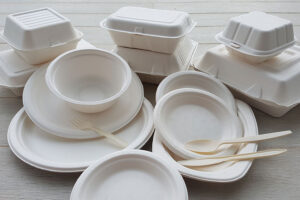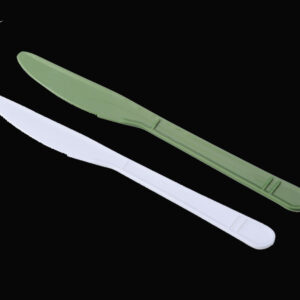When selecting environmentally friendly tableware, it’s essential to consider the materials used in their production. By understanding the characteristics and properties of each material, consumers can make informed choices that align with their sustainability goals. Let’s delve into some common materials used in environmentally friendly tableware:
Cornstarch (Polylactic Acid – PLA) Tableware
Cornstarch, or polylactic acid (PLA), is a biodegradable polymer derived from fermented corn starch or sugarcane. It offers a sustainable alternative to traditional plastics and can be moulded into various tableware products, including plates, bowls, and cutlery.
Key Features:
- Biodegradability: Cornstarch-based tableware breaks down naturally over time, reducing environmental impact.
- Versatility: PLA can be moulded into different shapes and sizes, catering to various serving needs.
- Suitability: Ideal for disposable and short-term use tableware applications, such as picnics, parties, and food service establishments.
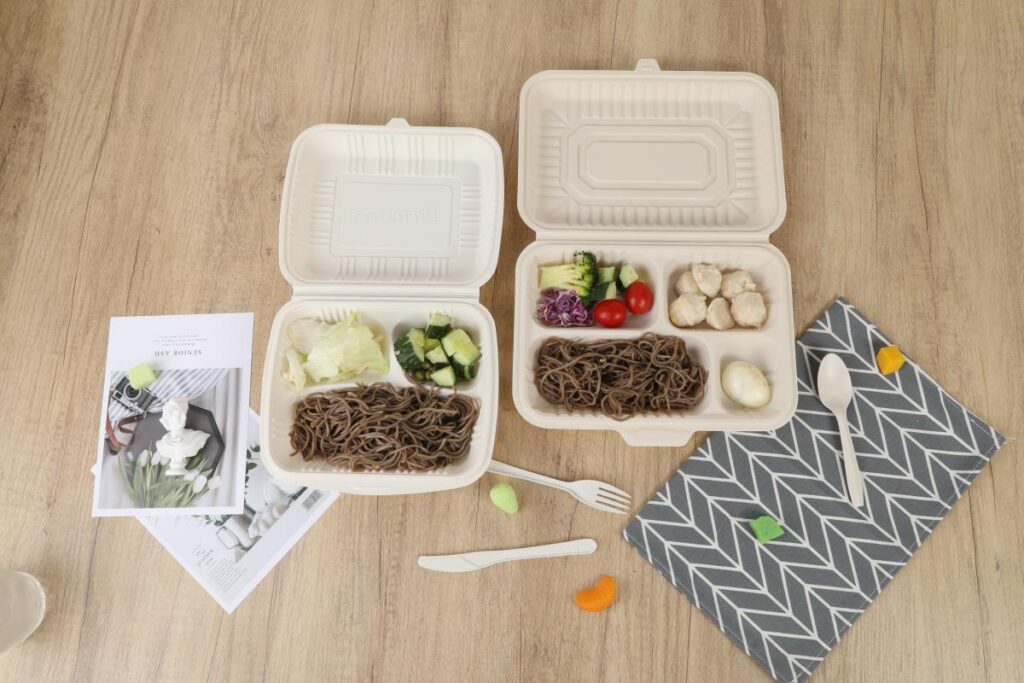
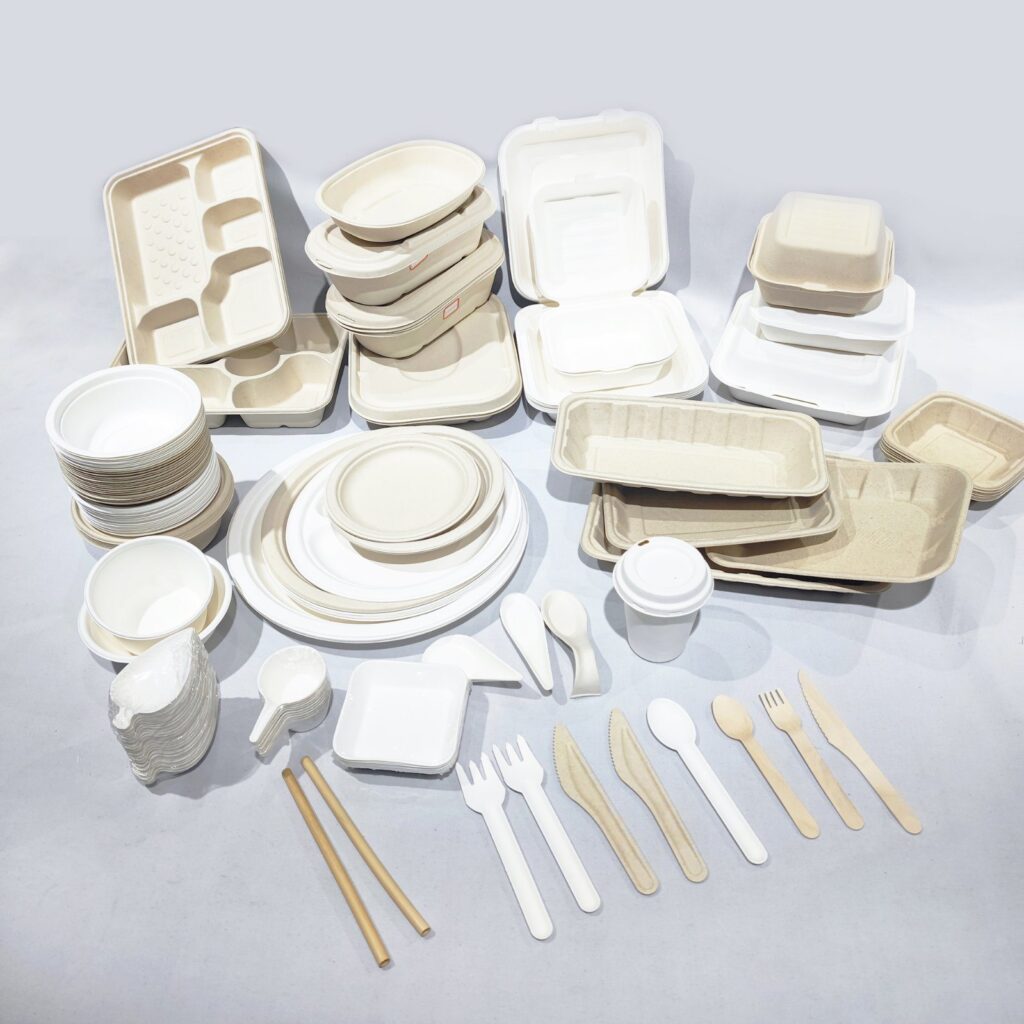
Sugarcane Bagasse Tableware
Sugarcane bagasse is a fibrous residue obtained after extracting juice from sugarcane. It serves as a renewable and sustainable material source for tableware production. Bagasse tableware is created by processing the fibres into a pulp and moulding them into desired shapes.
Key Features:
- Biodegradability: Sugarcane bagasse tableware decomposes naturally, contributing to environmental sustainability.
- Strength: Despite its lightweight nature, bagasse tableware exhibits sturdiness, ensuring durability during use.
- Applicability: Suitable for disposable and short-term use tableware, making it an ideal choice for events and gatherings.
Bamboo Fiber Tableware
Bamboo fibre is derived from bamboo, a fast-growing and renewable grass. The fibres are extracted, combined with natural binders, and moulded into various tableware products, offering a durable, eco-friendly alternative.
Key Features:
- Durability: Bamboo fibre tableware is known for its strength and resilience, making it suitable for everyday use.
- Heat Resistance: Resistant to high temperatures, bamboo tableware can withstand hot foods and liquids.
- Sustainability: Bamboo is a highly sustainable resource due to its rapid growth rate and minimal environmental impact.
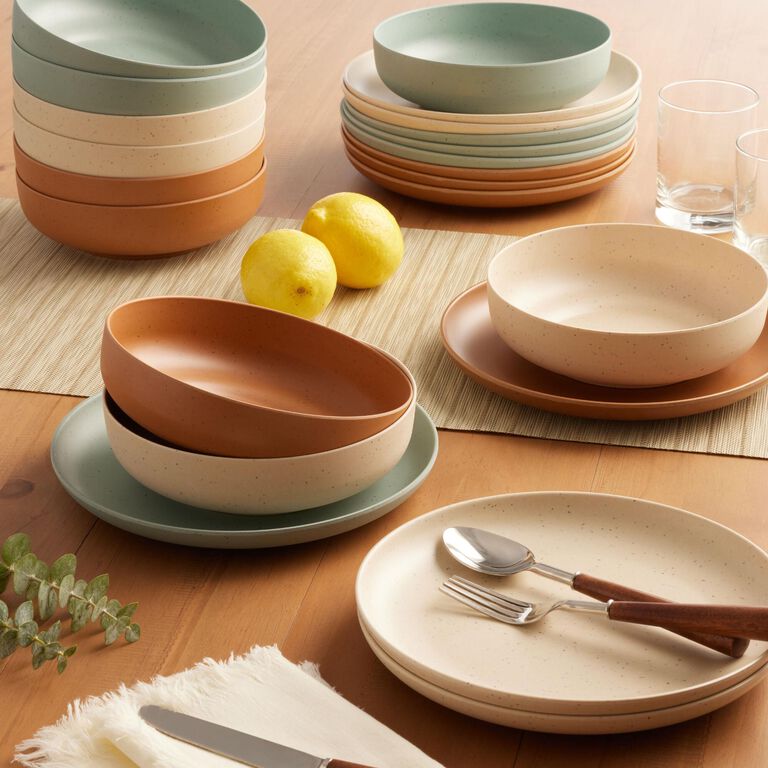
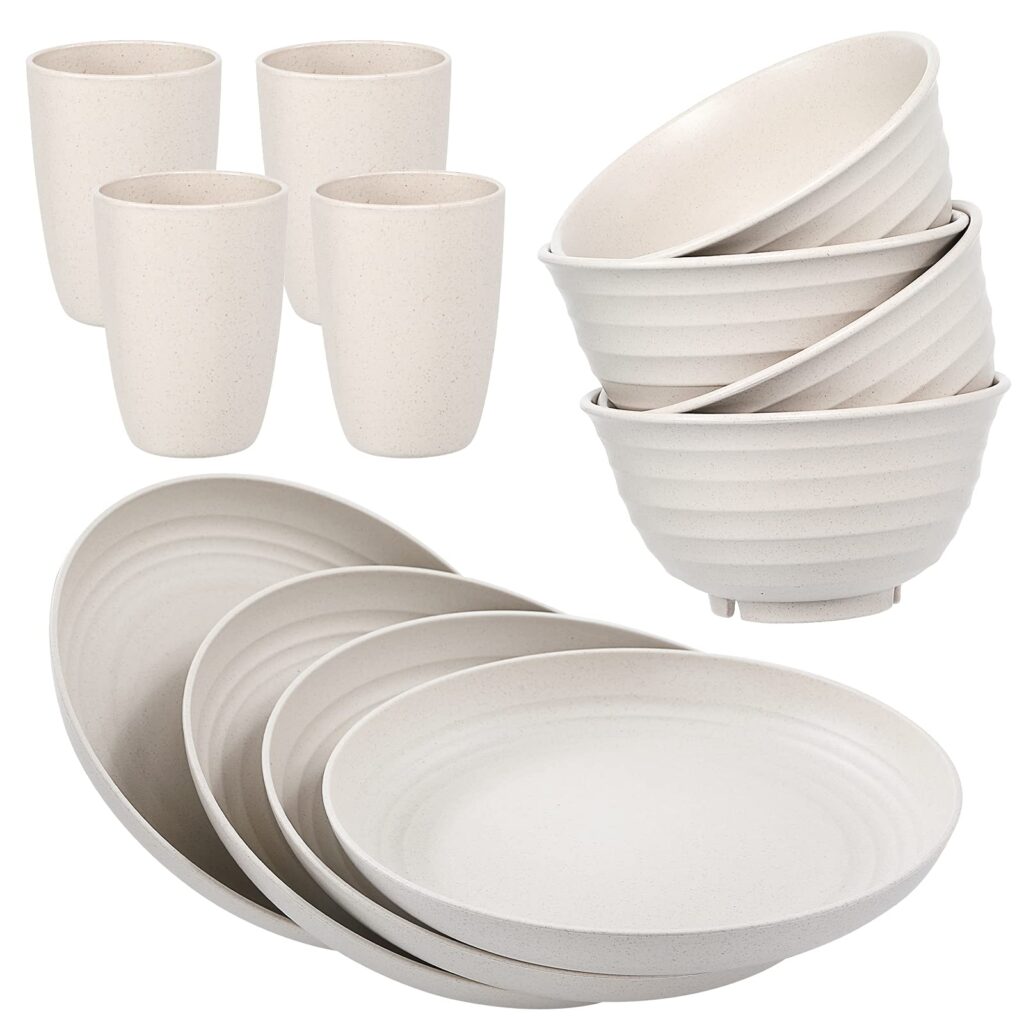
Wheat Straw Tableware
Wheat straw is an agricultural byproduct obtained after harvesting wheat grains. It can be processed into pulp and moulded into tableware products, providing a sustainable and renewable material source.
Key Features:
- Eco-Friendly: Wheat straw tableware is biodegradable and compostable, minimizing environmental pollution.
- Lightweight: Despite its lightweight composition, wheat straw tableware offers sufficient durability for various serving purposes.
- Versatility: Suitable for disposable and short-term use tableware applications, contributing to waste reduction efforts.
Comparison Table of Environmentally Friendly Tableware Materials
To provide a more precise overview, here is a comparison table highlighting the advantages and disadvantages of each environmentally friendly tableware material:
| Material | Advantages | Disadvantages |
| Cornstarch (PLA) | Biodegradable, versatile, suitable for disposable use | Can be relatively expensive, may not withstand high temperatures well |
| Sugarcane Bagasse | Biodegradable, sturdy, suitable for disposable use | Can absorb moisture over time, may become soggy |
| Bamboo Fiber | Durable, heat-resistant, suitable for reusable applications | Some products may contain synthetic binders |
| Wheat Straw | Biodegradable, lightweight, suitable for disposable use | May have a slight wheat scent, limited heat resistance |
Conclusion
In conclusion, there are several environmentally friendly tableware materials available, each offering unique benefits and properties. From cornstarch (PLA) and sugarcane bagasse to bamboo fibre and wheat straw, these materials provide sustainable alternatives to traditional plastic tableware. Individuals and businesses can reduce their environmental footprint and promote a more sustainable future by opting for environmentally friendly tableware.




